As dusk settles over Hanoi, a remarkable transformation begins in the labyrinthine alleys of the Old Quarter. A quiet, historic lane awakens, and a symphony of sounds rises to greet the night.
This is Ta Hien Street, the legendary Hanoi Beer Street. It’s a place of joyful chaos, where the rhythmic clinking of glasses, the sizzle of street-side grills, and the roar of laughter from a dozen different languages merge into a single, intoxicating hum.
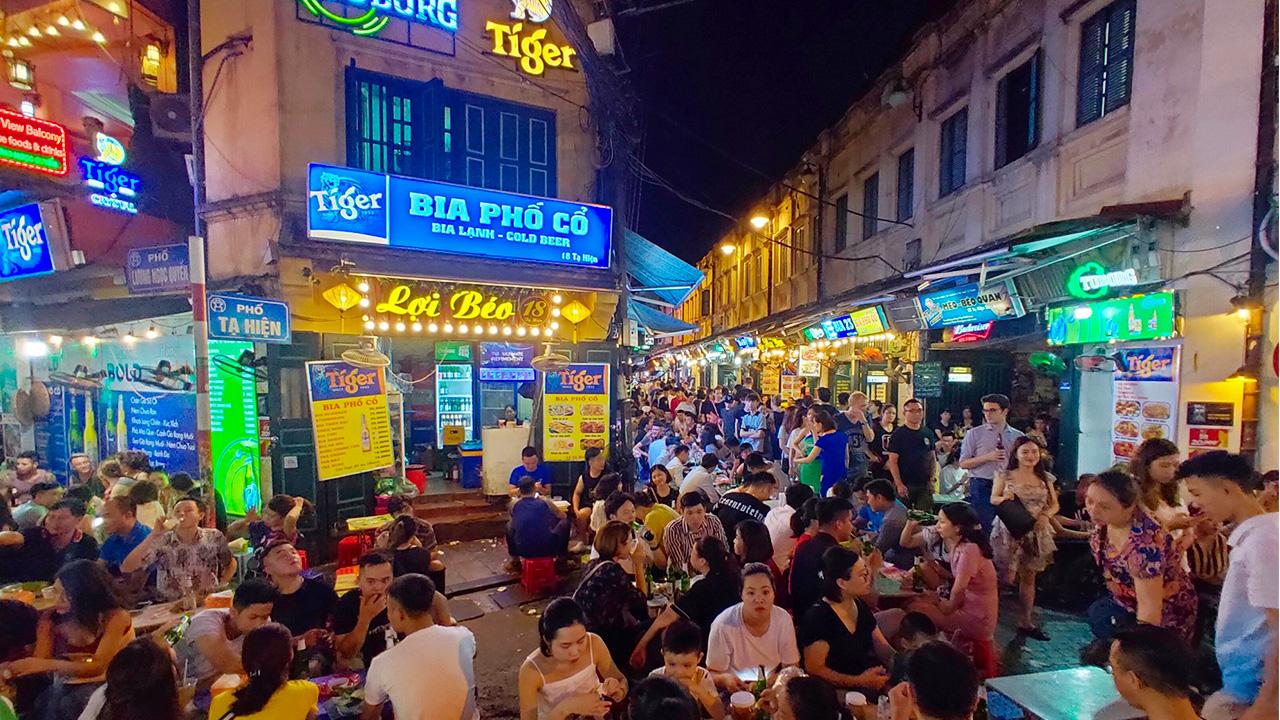
More than just a location on a map, Ta Hien is a cultural institution—the “beating heart of Hanoi’s vibrant cultural and social life”. Known interchangeably as Beer Street, Bia Hoi Corner, and the “International Crossroad,” it is the city’s great equalizer.
Here, on tiny plastic stools that spill across the pavement, locals fresh from work sit shoulder-to-shoulder with seasoned travelers and wide-eyed backpackers, all united by a shared quest for connection and a cold glass of beer.
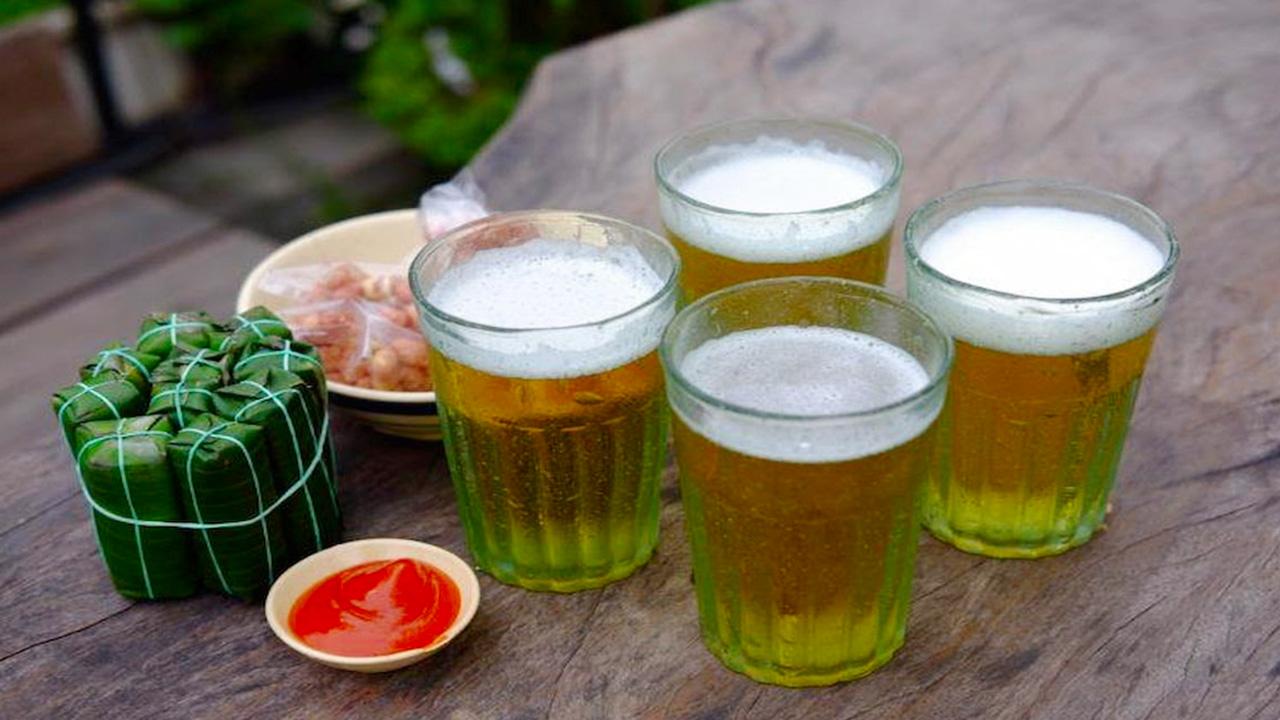
This guide serves as the definitive passport to that experience, navigating the history, decoding the essential bia hoi culture, uncovering the unmissable street food, spotlighting the best bars, and providing the practical wisdom needed to conquer this iconic corner of Hanoi.
The Soul of Hanoi Beer Street – Understanding the Bia Hoi Experience
What is Bia Hoi? The Elixir of Hanoi
The undisputed star of Ta Hien Street is bia hoi, Vietnam’s iconic fresh draft beer. It is a light, crisp, and remarkably refreshing lager brewed daily without any preservatives, a characteristic that dictates its ephemeral nature—it is made to be consumed on the very day it is brewed.
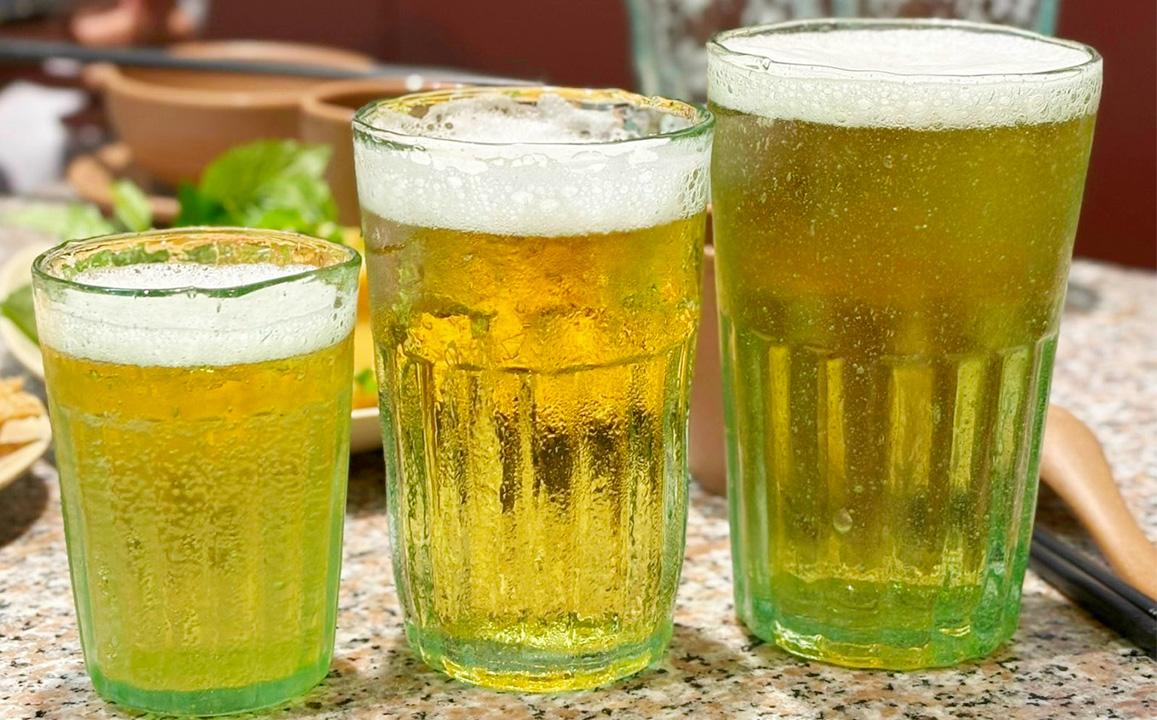
With a low alcohol content hovering around 3–4%, bia hoi is perfectly engineered for long, social drinking sessions in Hanoi’s humid climate. Its gentle buzz and easy drinkability encourage conversation and connection, rather than intoxication.
Served ice-cold straight from gleaming metal kegs, this pale golden elixir is the lifeblood of the street, offering a uniquely Hanoian taste that is both simple and profound.
A Taste of History: From French Lager to a People’s Brew
The story of bia hoi is a liquid artifact of Vietnam’s turbulent 20th-century journey. Beer was first introduced to the country by the French during the colonial period, an imported luxury for the ruling class.
However, the bia hoi of today bears little resemblance to a French lager. The pivotal shift occurred in the post-war era, as a newly independent Vietnam looked to the Soviet Union and its Eastern Bloc allies for support and influence. This new reality created a need for a product that was socialist in principle: cheap, accessible, and made for the masses.
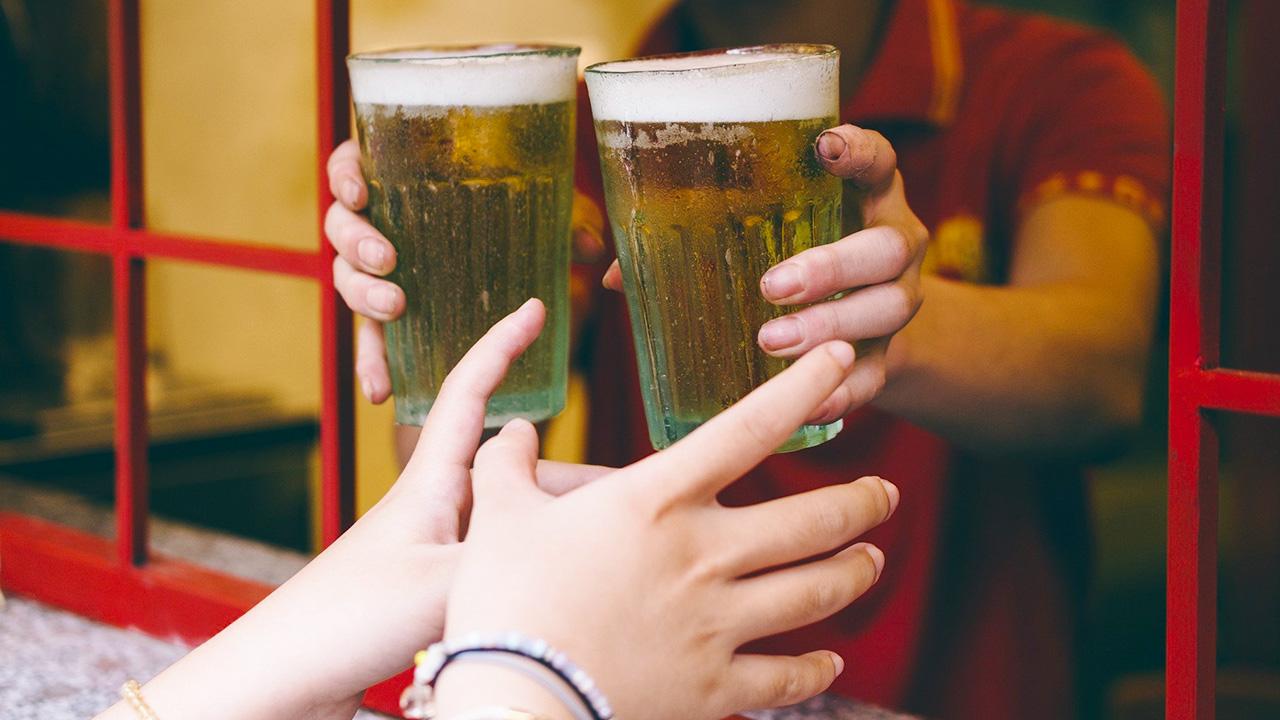
The focus turned to a low-cost, quick-fermenting beer that could be brewed in bulk and distributed daily to street vendors. The resulting beverage—unpasteurized, unbottled, and unbranded—was a direct product of this economic and political necessity.
In this transformation, a colonial import was reclaimed and remade into a powerful symbol of Vietnamese resilience, ingenuity, and communal spirit.
The Rituals of the Plastic Stool
The bia hoi experience is inseparable from its unique rituals. The quintessential scene on Ta Hien is one of patrons perched on tiny, colorful plastic stools that colonize the sidewalks, creating a democratic and communal atmosphere where status is left behind.
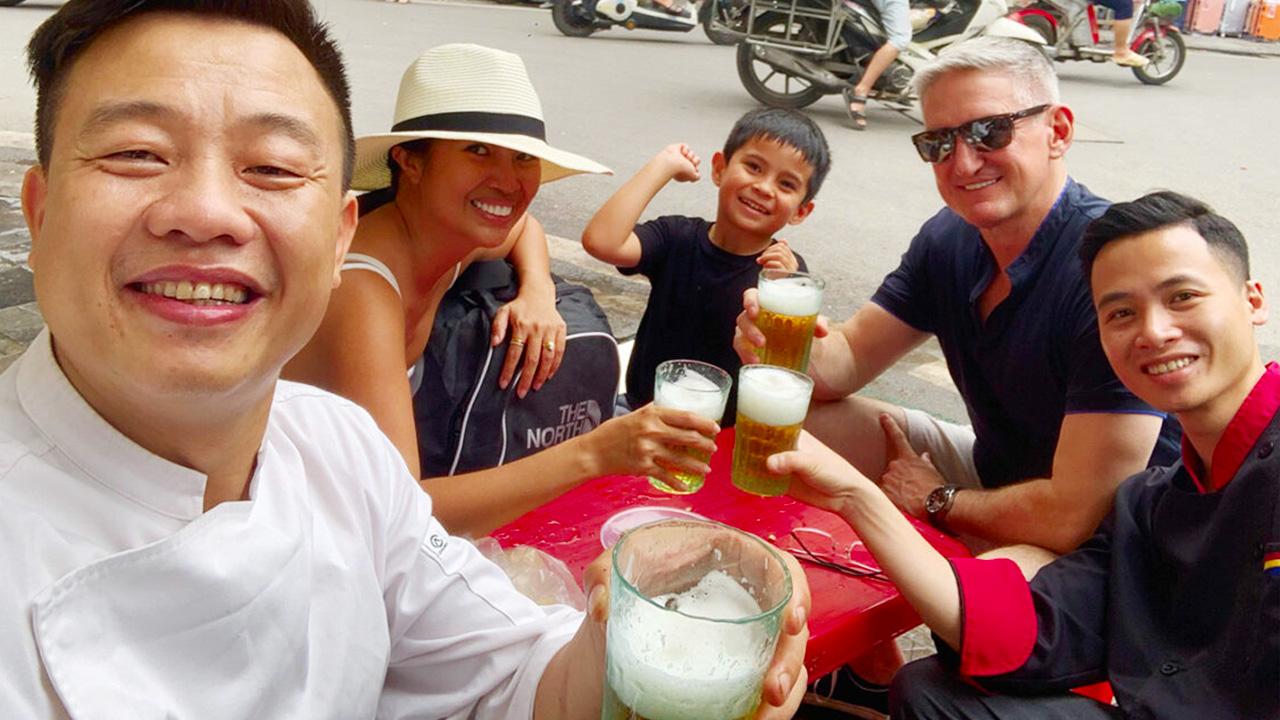
The vessel itself is iconic: a cloudy, thick-bottomed glass, often with visible air bubbles trapped within its recycled form. This specific glass was designed in the 1970s by artist Le Huy Van, who was tasked with creating a standardized, durable container during the subsidy period. Its ridged sides and sturdy build became an inseparable part of the culture.
The experience is punctuated by the all-important toast: “Một, hai, ba, dô!” (One, two, three, cheers!). This boisterous, unifying cry erupts spontaneously across tables—a sound of pure camaraderie that often ropes in strangers and solidifies the street’s reputation as a place of instant connection.
A Tale of Two Streets – History, Architecture, and Atmosphere
The Daily Metamorphosis: From Tranquil Alley to Electric Artery
The daily transformation of Ta Hien Street is a living metaphor for the cultural and economic dynamics of modern Hanoi. By day, the street reveals its historical bones. It is a quiet, almost sleepy lane where the architectural legacy of both Vietnamese and French influence can be appreciated in peace. Cafes are open and locals go about their business, the explosive energy of the night lying dormant beneath the “old charm” of its preserved facades.
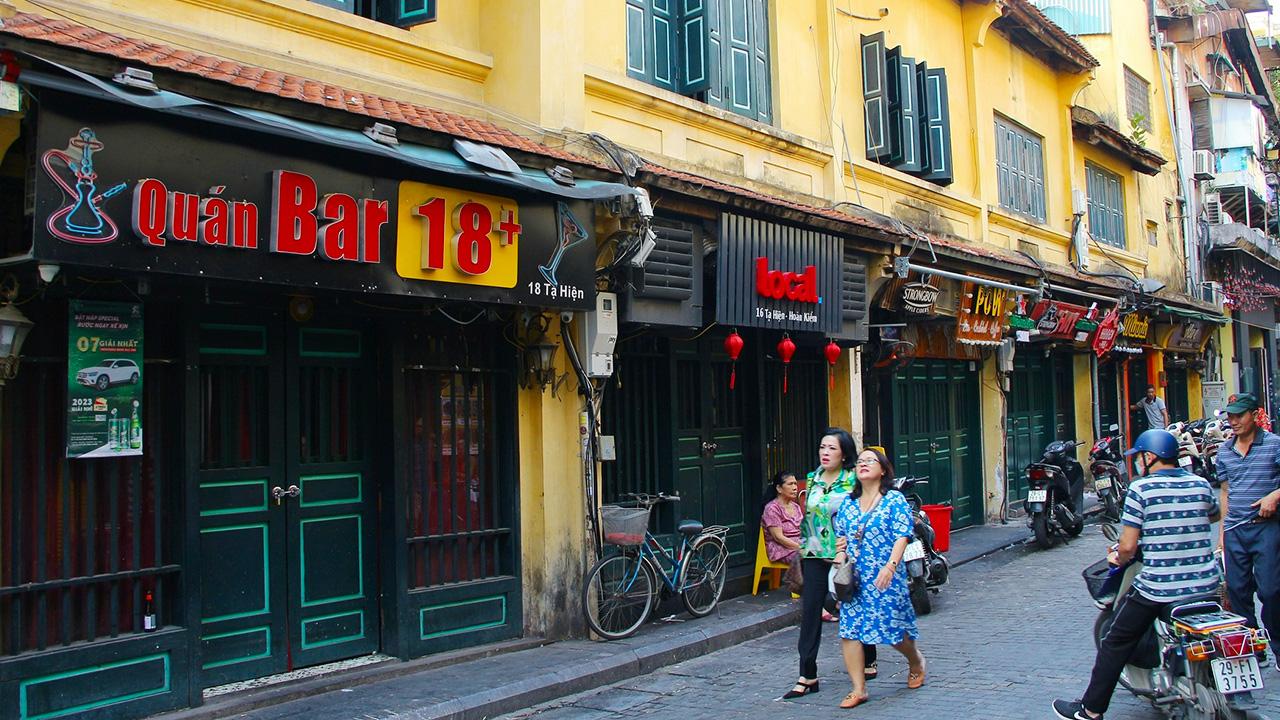
This historic stage, however, is completely overtaken as evening approaches. The dramatic metamorphosis begins around 5 PM, when the street “comes alive.” Plastic stools flood the pavement, neon signs flicker on, and a cacophony of music begins to pump from every doorway. This contemporary, globalized, and commercial spectacle of nightlife represents Hanoi’s dynamic present.
The atmosphere builds into a carnival-like frenzy, reaching its peak between 8 PM and midnight, with weekends being significantly more crowded and energetic. The fact that one identity doesn’t erase the other—the party simply packs up in the morning to reveal the history underneath—shows how Hanoi successfully layers its contemporary identity on top of its heritage without destroying it.
A Walk Through Time: The Evolution of Ta Hien
The street’s history is as layered as its architecture. It began as a traditional guild street in ancient Thang Long before being named “Rue Géraud” during the French colonial period.
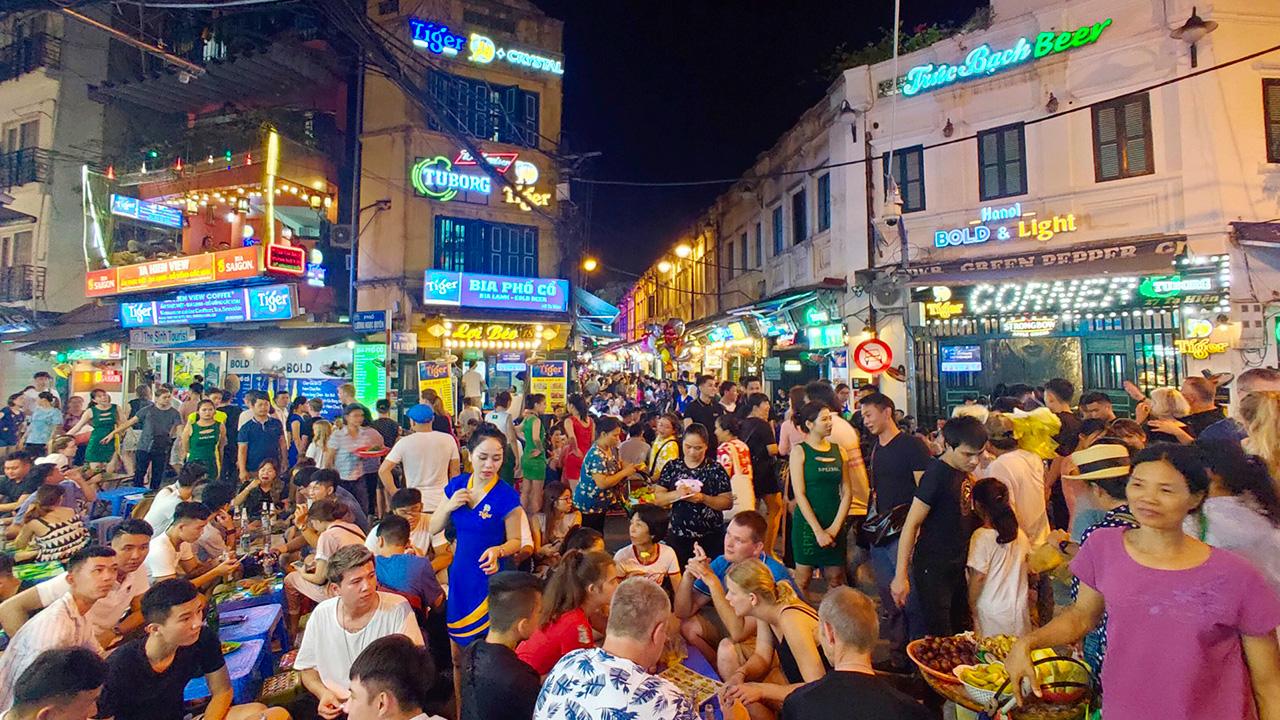
For a time, it was known locally as “Quang Lac Alley,” home to Hanoi’s most famous theater—a vibrant spot for the city’s elite. In 1945, with independence, the street was renamed Ta Hien to honor a Vietnamese hero of the Cần Vương movement against French rule
Its final transformation into the “Beer Street” we know today occurred gradually after the country’s reunification in 1975, as tourism grew and it became a favorite haunt for locals and foreigners alike.
An Architectural Dialogue: French Colonialism Meets Vietnamese Tradition
Ta Hien’s most captivating visual feature is its architectural dialogue, with two opposing rows of houses built in distinctly different styles. The even-numbered side of the street showcases traditional Vietnamese architecture, characterized by narrow, two-story “tube houses.”
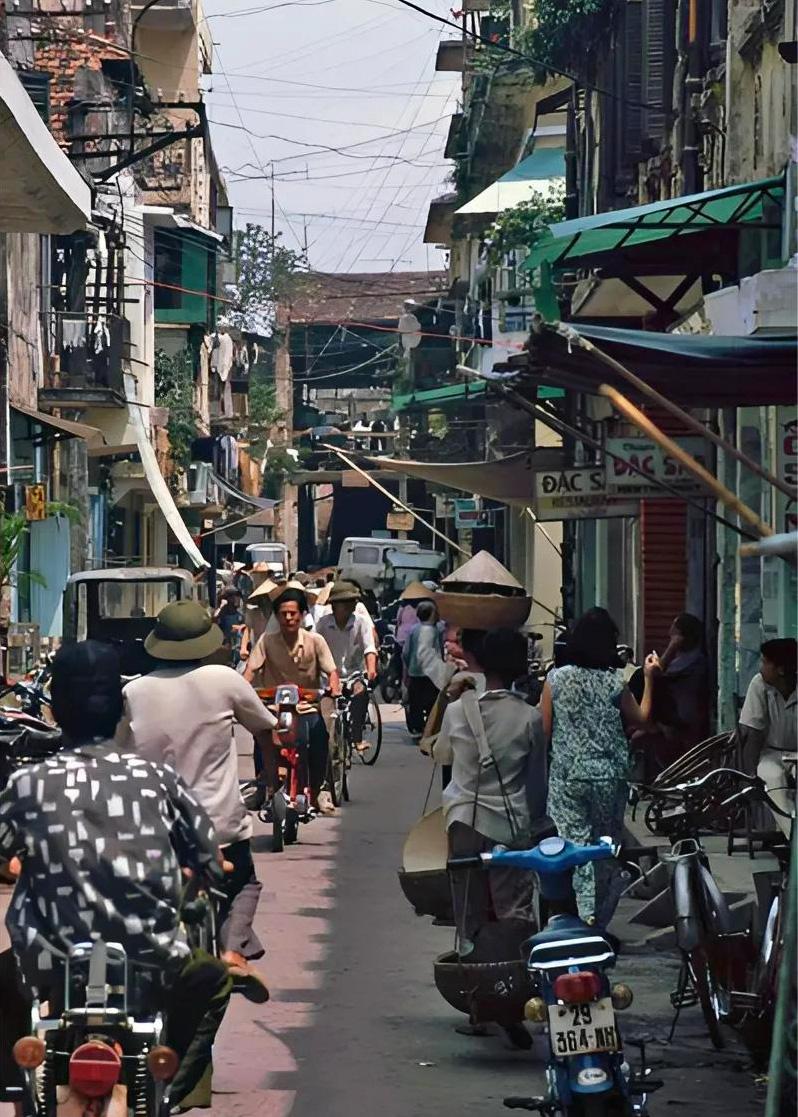
In contrast, the odd-numbered side presents a uniform row of French colonial-style buildings, with classic facades and sloping roofs that are a direct remnant of early 20th-century urban planning.
This harmonious fusion of styles creates a visually rich environment that captures both the city’s colonial past and its vibrant, independent present.
A Feast for the Senses – The Definitive Food Guide to Ta Hien
More Than a Snack: The Culture of ‘Đồ Nhắm’
In Vietnam, drinking beer is rarely a solitary act, and it almost never happens without food. The culture revolves around đồ nhắm—a vast category of savory snacks specifically designed to accompany alcohol. These dishes are not mere appetizers; they are an integral part of the social ritual, crafted to complement the beer, stimulate the appetite, and prolong the convivial experience. Ta Hien Street is a veritable paradise for đồ nhắm, with vendors offering a symphony of flavors grilled, fried, and tossed to perfection.
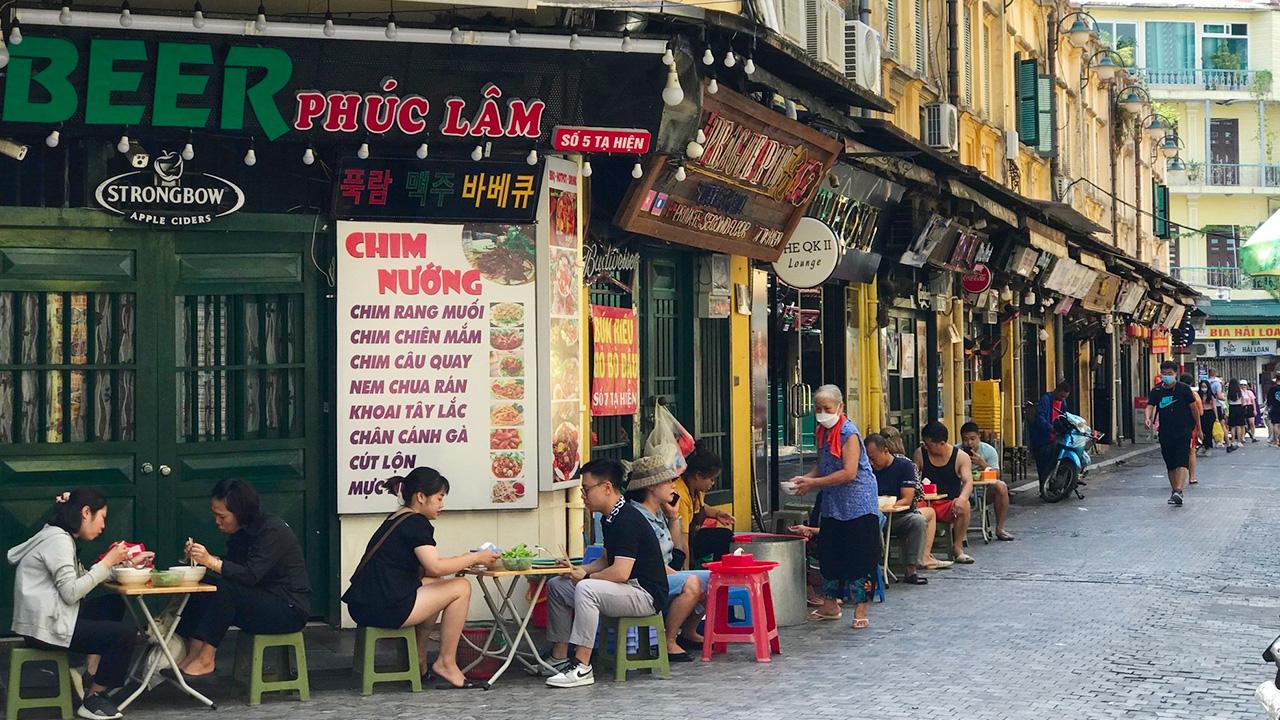
The Must-Try Beer Companions
While exploring Ta Hien, a number of essential snacks are required to complete the bia hoi experience. These include Nem Chua Rán (fried fermented pork roll), a quintessential beer snack with a crispy, golden-fried exterior that gives way to a tangy, chewy interior.
Another favorite is Bò Khô (dried beef salad), a vibrant mix of spicy shredded beef jerky, julienned green papaya, fresh herbs, and roasted peanuts, all tossed in a zesty dressing. For the more adventurous, Chim Cút Nướng (grilled quail) offers small, whole birds marinated and grilled over charcoal until the skin is crisp and the meat is fragrant.
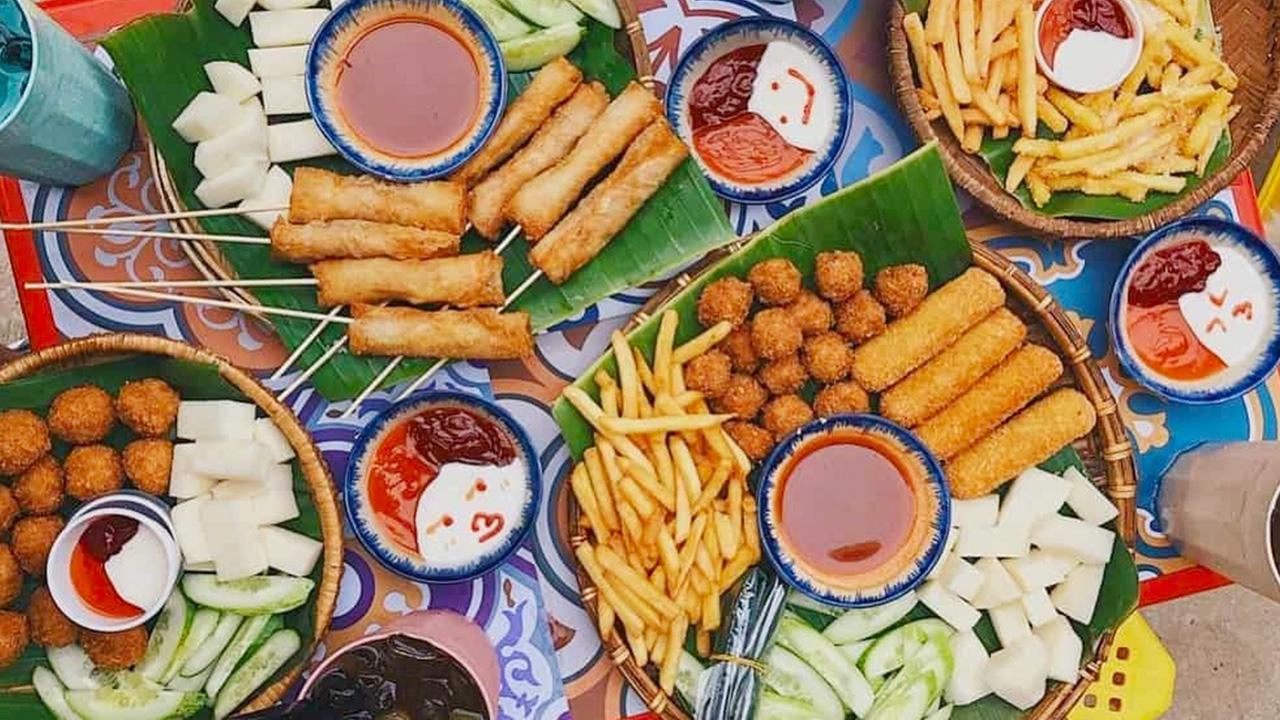
Equally popular is Chân Gà Nướng (grilled chicken feet), a local delicacy marinated and grilled to a perfect chewy-crispy texture. Simpler, yet no less essential, are plates of Lạc luộc (boiled peanuts) and Đậu lướt ván (fried tofu), the foundational snacks of any true bia hoi session.
While đồ nhắm is king, visitors can also find stalls and small restaurants serving full Vietnamese meals like Phở, Bún Chả, and Bánh Mì in and around the street.
| Must-Try ‘Đồ Nhắm’ (Beer Snacks) on Ta Hien Street |
| Vietnamese Name (English Name) |
| Nem Chua Rán (Fried Fermented Pork) |
| Bò Khô (Beef Jerky Salad) |
| Chim Cút Nướng (Grilled Quail) |
| Chân Gà Nướng (Grilled Chicken Feet) |
Beyond the Keg – Navigating Ta Hien’s Eclectic Bars and Clubs
The diverse ecosystem of venues on Ta Hien provides a “nightlife graduation” path, catering to the entire lifecycle of an evening out. The experience evolves from casual street-side beginnings to more refined pubs and culminates in high-energy, late-night clubs, demonstrating how the street has developed a complete entertainment economy that captures visitors from early evening until the early morning.
The Foundation: Sidewalk Bia Hoi Stalls
The most authentic Ta Hien experience begins at its epicenter: the humble street-side stalls at the intersection of Ta Hien and Luong Ngoc Quyen streets, famously known as Bia Hoi Corner. This is the social “appetizer” of the night, the ground-zero of the street’s energy, where the classic plastic stools and cheap, fresh beer define the initial phase of any visit.
The Icons of Ta Hien Nightlife
As the night progresses, many “graduate” to the street’s more established venues. The most famous of these is 1900 Le Théâtre, a legendary club housed in a converted colonial-era theater. It masterfully blends retro decor with a modern nightclub atmosphere, renowned for its epic light shows, top-tier DJs, and a vibrant, youthful crowd ready to dance until the early hours.
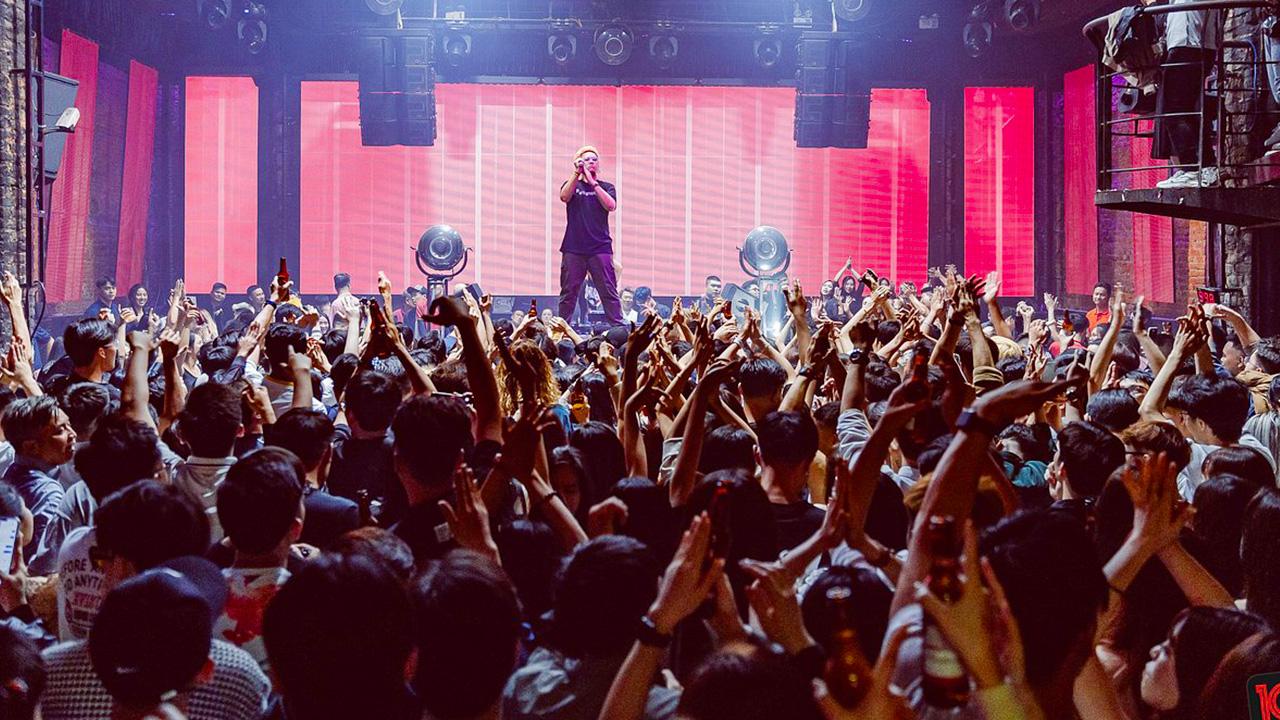
Another institution is Funky B (formerly Funky Buddha), one of the Old Quarter’s oldest bars, established in 2008. It remains a go-to destination for electronic music lovers, spinning everything from Deep House to Progressive House.
A Spectrum of Choices: Pubs and Bars for Every Mood
Beyond the main icons, Ta Hien and its immediate vicinity offer a venue for every taste. For those seeking a more relaxed, European-style pub experience, Prague Pub offers good food, quality drinks, and live music.
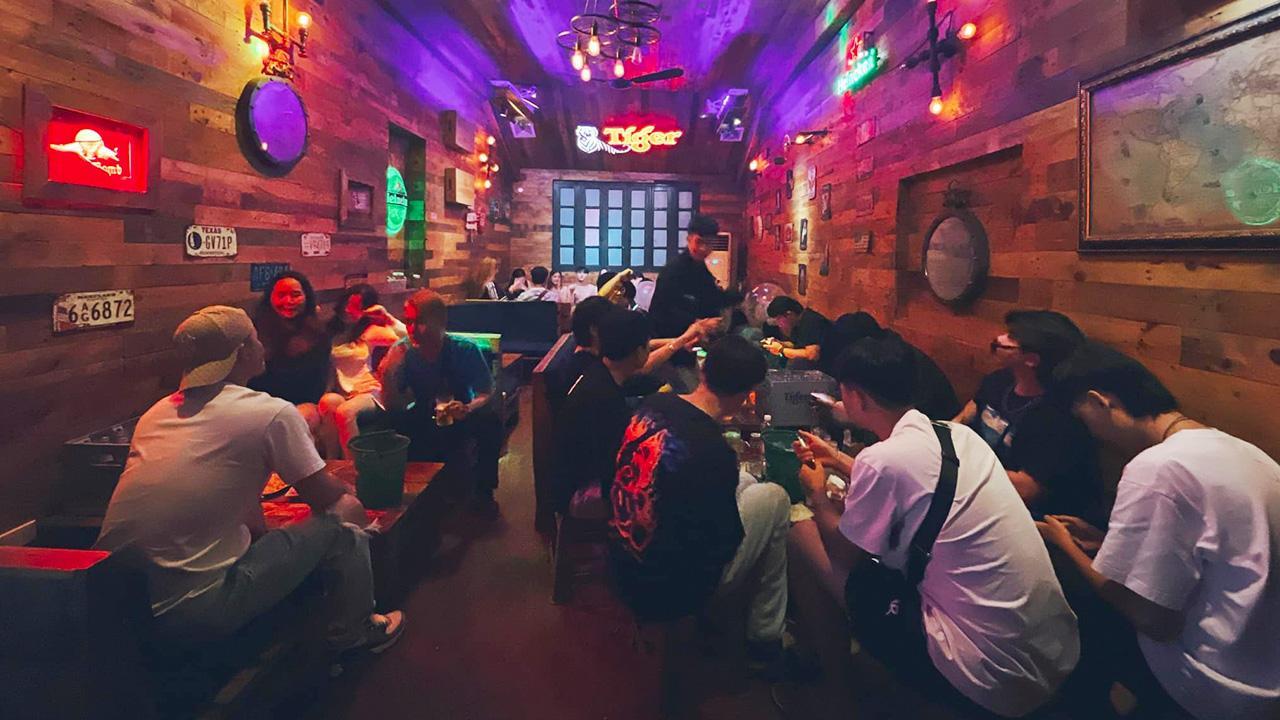
Fat Cat Bar is a laid-back spot popular with foreigners, providing a comfortable atmosphere for conversation with its varied indoor, outdoor, and attic seating. For a different perspective, rooftop bars like Northern Soul offer a chance to escape the street-level chaos and observe the vibrant scene from above.
The street also frequently becomes an impromptu stage for live entertainment, with acoustic musicians and street artists adding to the lively ambiance—especially on weekends.
The Essential Ta Hien Playbook – A Traveler’s Guide to a Perfect Night
The most valuable “travel hack” for Ta Hien isn’t about finding the cheapest beer, but about mastering the social and transactional etiquette. The environment can be chaotic and overwhelming for a first-timer, creating a vulnerability to minor frustrations or scams. By learning a few key phrases, understanding the rituals, and knowing the approximate prices, a visitor transforms from a passive observer into a confident participant, unlocking a more authentic and enjoyable cultural experience.
Logistics & Location
Ta Hien Street is located in the heart of the Old Quarter and is best reached on foot, just a short stroll from Hoan Kiem Lake. While taxis and ride-hailing apps like Grab are available, the area’s narrow streets are prone to heavy traffic congestion, making walking the most reliable option.
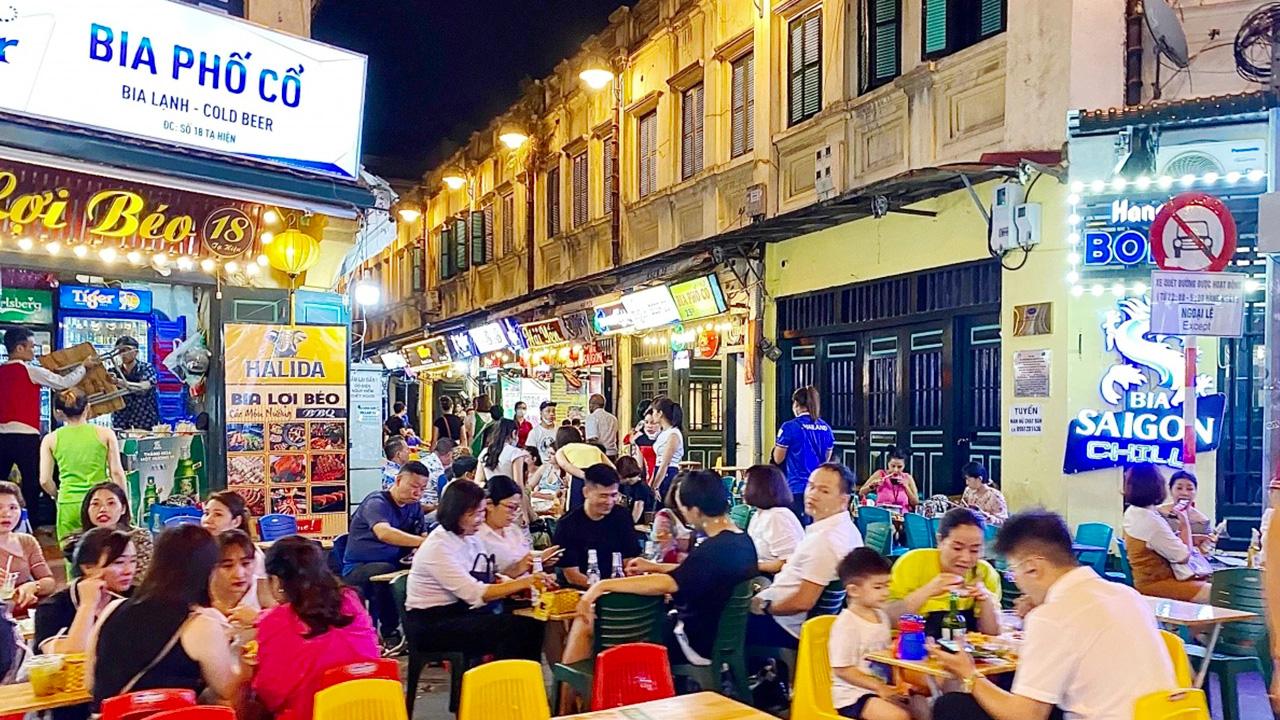
For the best experience, arrive between 5 PM and 7 PM to secure a good seat and witness the street’s nightly transformation. Weekdays offer a lively but more manageable crowd, while weekends (Friday to Sunday) are packed to the brim, offering peak energy and atmosphere.
Navigating with Confidence: Safety, Scams, and Costs
While generally safe, the primary concern in any crowded area is petty crime. It is wise to keep valuables secure and be mindful of your surroundings to avoid pickpocketing. Though most vendors are honest, some visitors report encounters with persistent touts; a polite but firm “no, thank you” is usually sufficient.
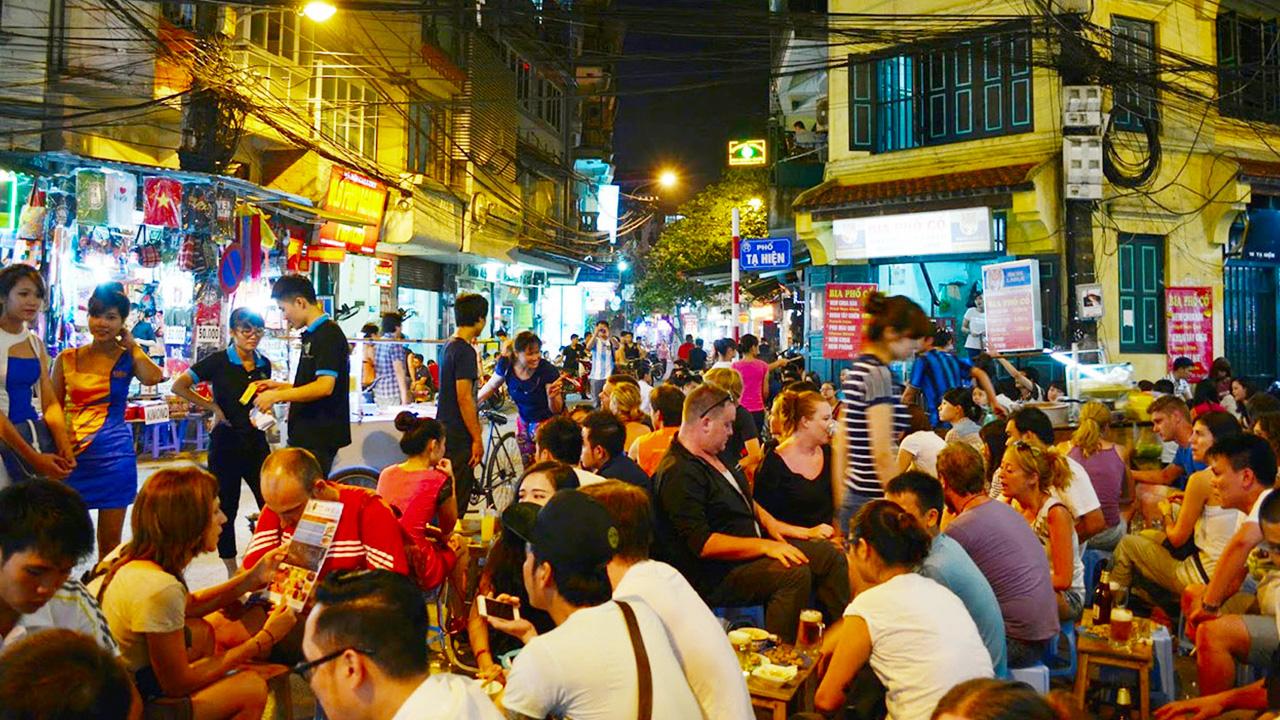
A crucial tip is to always confirm prices before ordering to avoid confusion or being overcharged. Paying as you go for each round is a simple strategy to prevent any end-of-night tab discrepancies.
In terms of budget, Ta Hien is exceptionally affordable. A glass of bia hoi often costs less than $1 USD (around 10,000 VND), while most street food dishes are well under $5 USD. Prices in the established bars and clubs for cocktails and imported beers will be significantly higher.
Local Etiquette: Drink Like a Hanoian
Embracing local customs enhances the experience. Ordering is simple: hold up your fingers to indicate the number of glasses and say “Bia Hoi.” When you are ready to leave, catch the server’s attention and say “Tính tiền” (check, please).
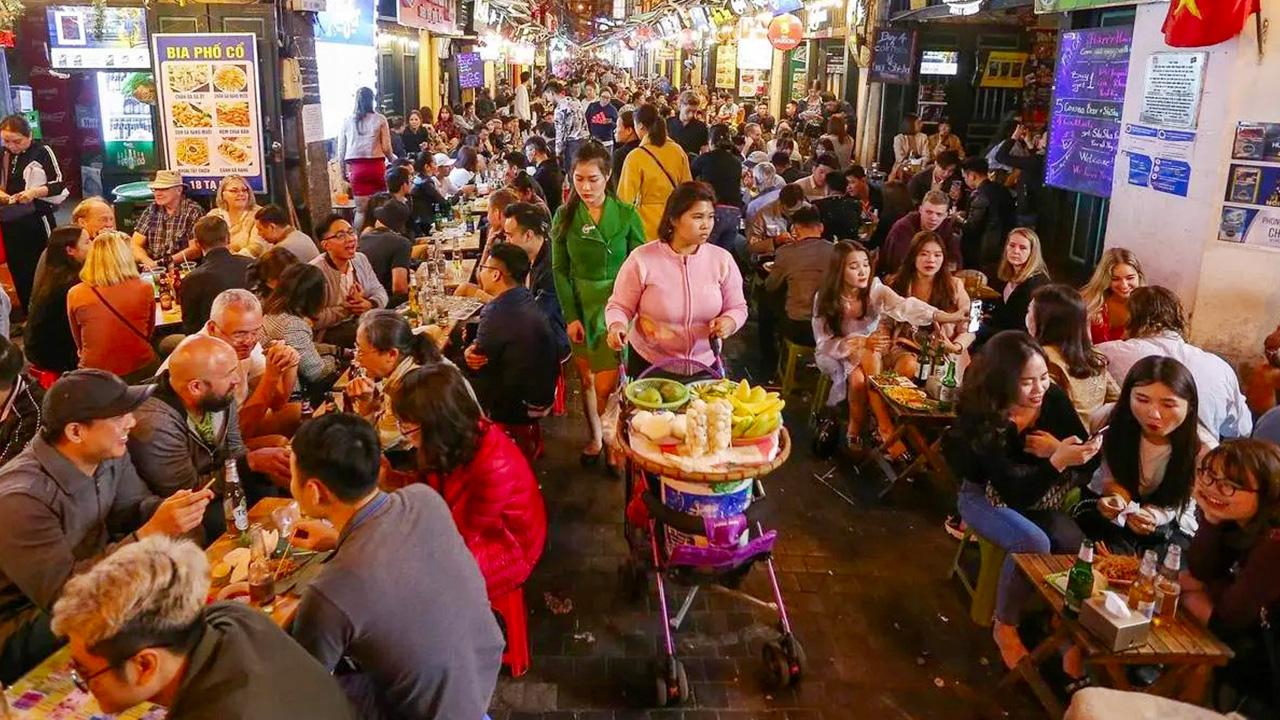
A small but important detail is the use of the small plastic bins placed under the tables; these are for discarding peanut shells, tissues, and other waste, keeping the tabletops clear.
Most importantly, embrace the communal spirit—don’t be shy about joining in a toast if invited.
Beyond Beer Street: Exploring the Neighborhood
Ta Hien’s central location makes it a perfect anchor for an evening of exploration. Within a short walk, you can visit the serene Hoan Kiem Lake, browse the bustling Weekend Night Market, admire the neo-gothic architecture of St. Joseph’s Cathedral, or visit the ancient Đền Bạch Mã (Bach Ma Temple), one of the city’s four sacred temples.
Conclusion: More Than a Street, It’s an Unforgettable Hanoi Memory
Ta Hien Street is far more than just a place to drink. It is a living, breathing intersection of history and modernity, a culinary paradise, and the undisputed social epicenter of Hanoi.
A night spent here is not about consumption, but participation. It is about joining a nightly ritual that embodies the city’s spirit—a spirit that is resilient, communal, and joyfully chaotic.
The true magic of Ta Hien lies in the simple, profound experience of sharing stories and laughter over a cheap, fresh beer on a tiny plastic stool. It is here, amidst the noise and the energy, that visitors find an authentic connection to the soul of Hanoi, creating their own “tipsy tales” and forging memories that last long after the last glass is empty.
A trip to the capital is simply incomplete without it.


